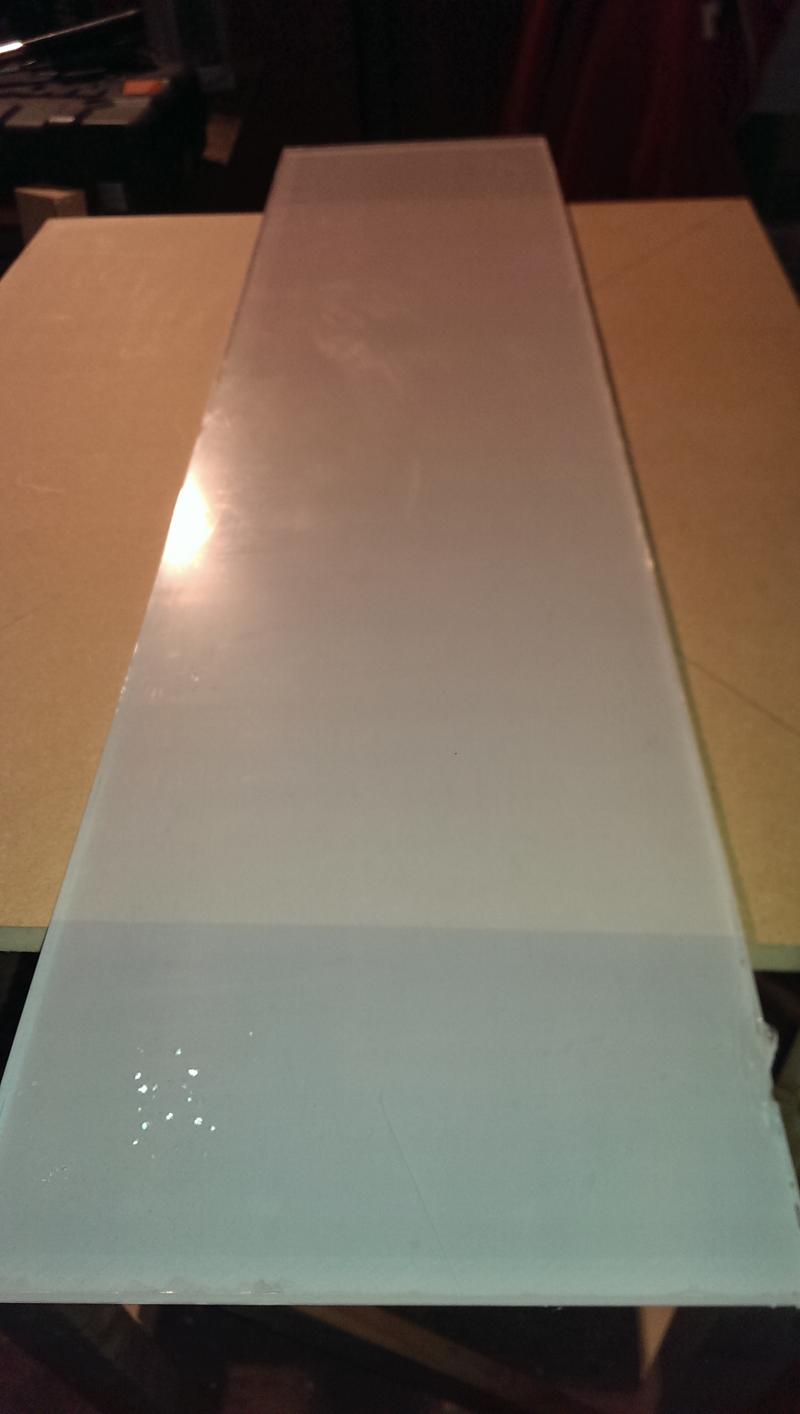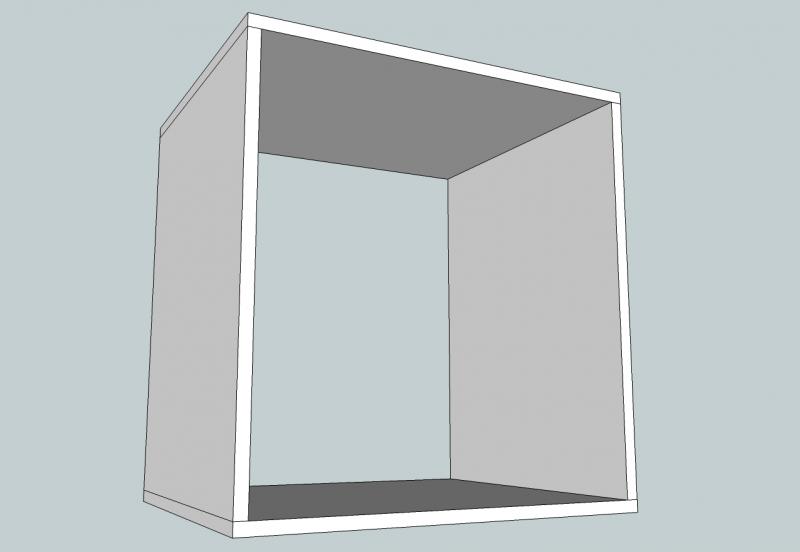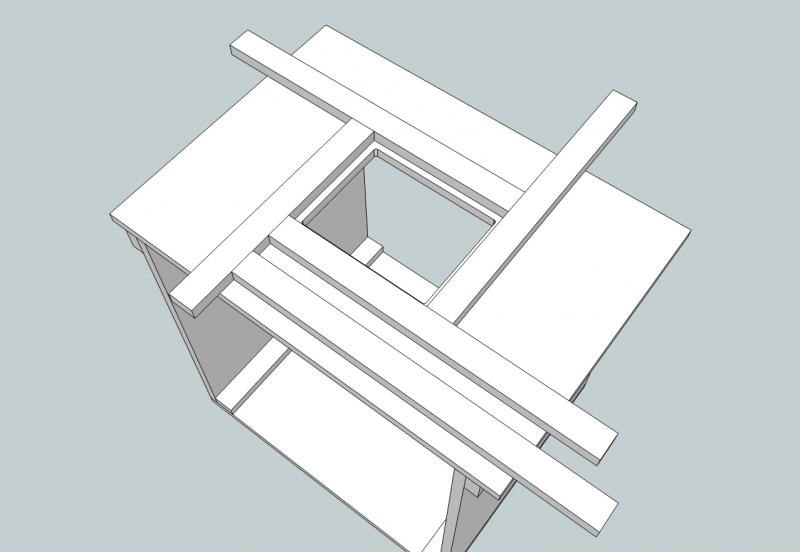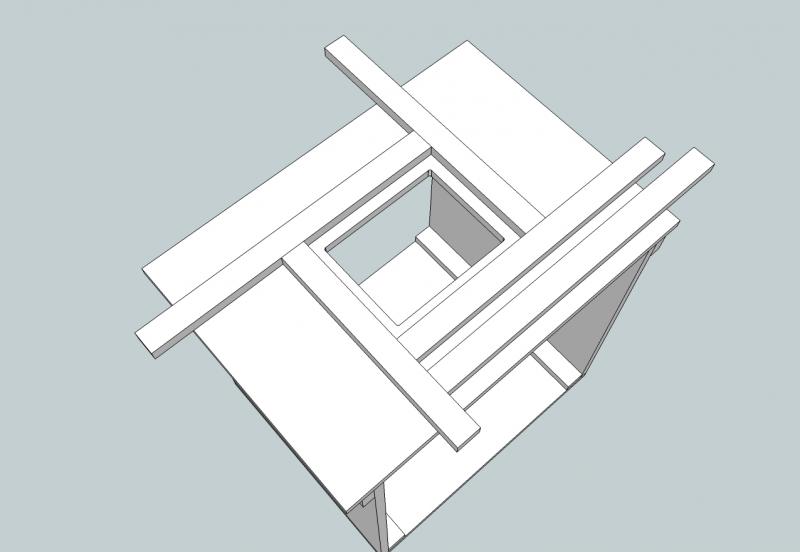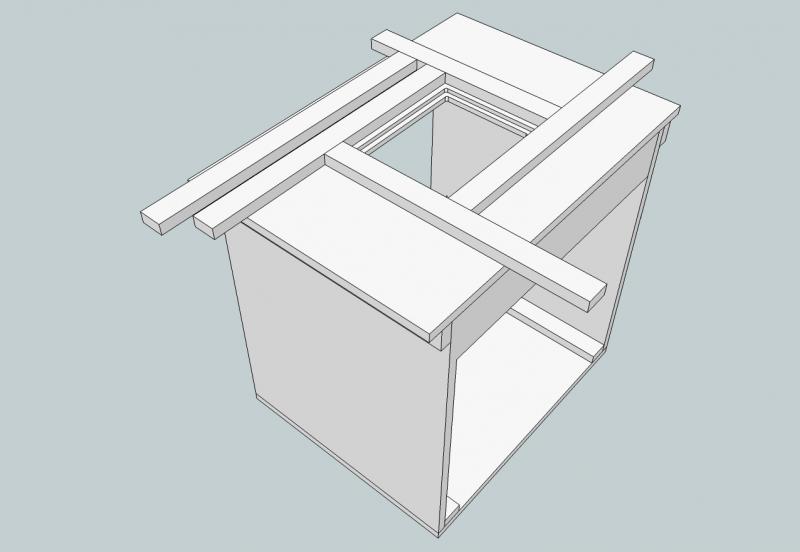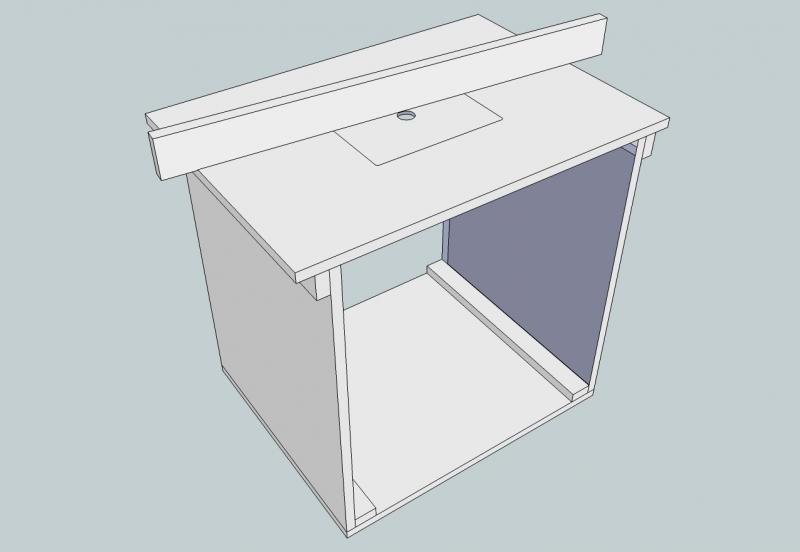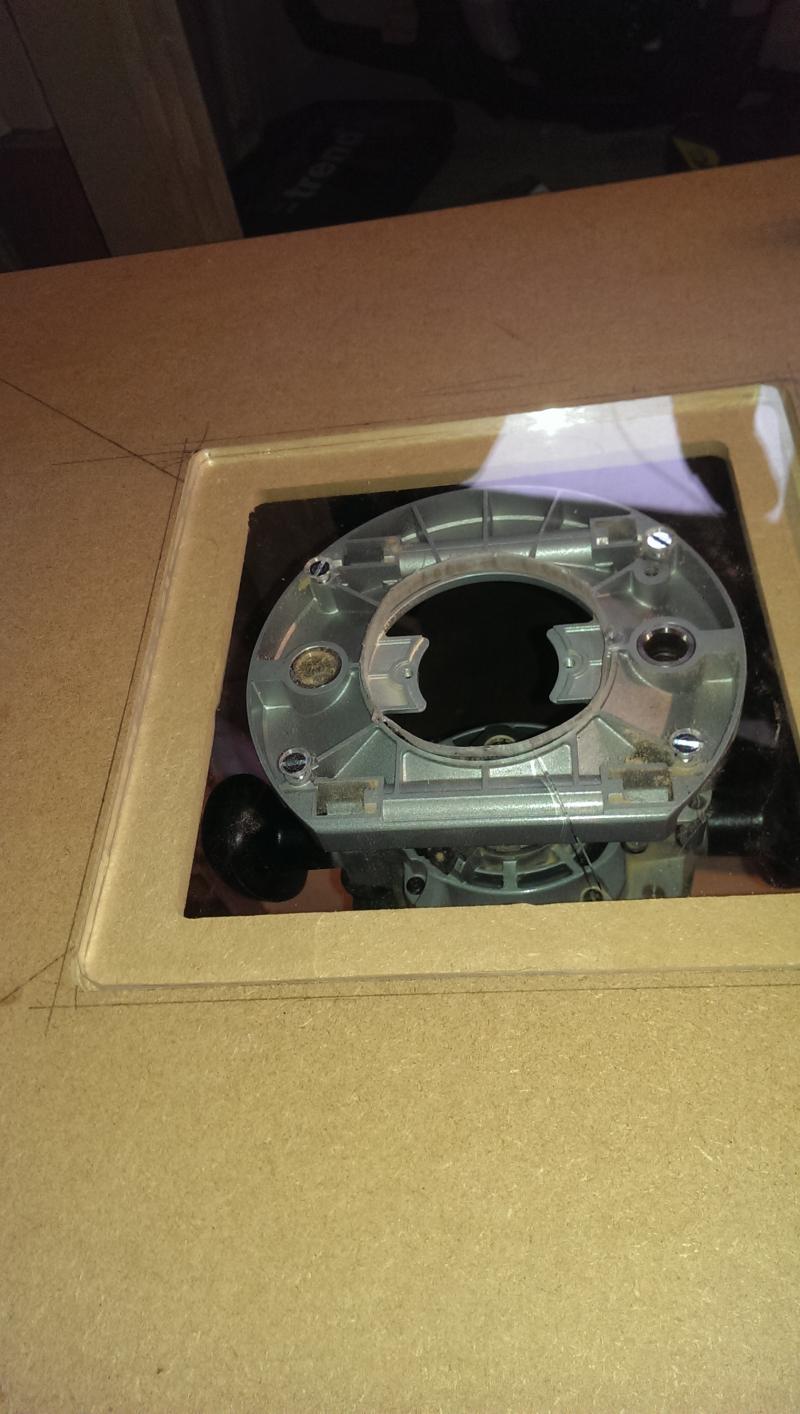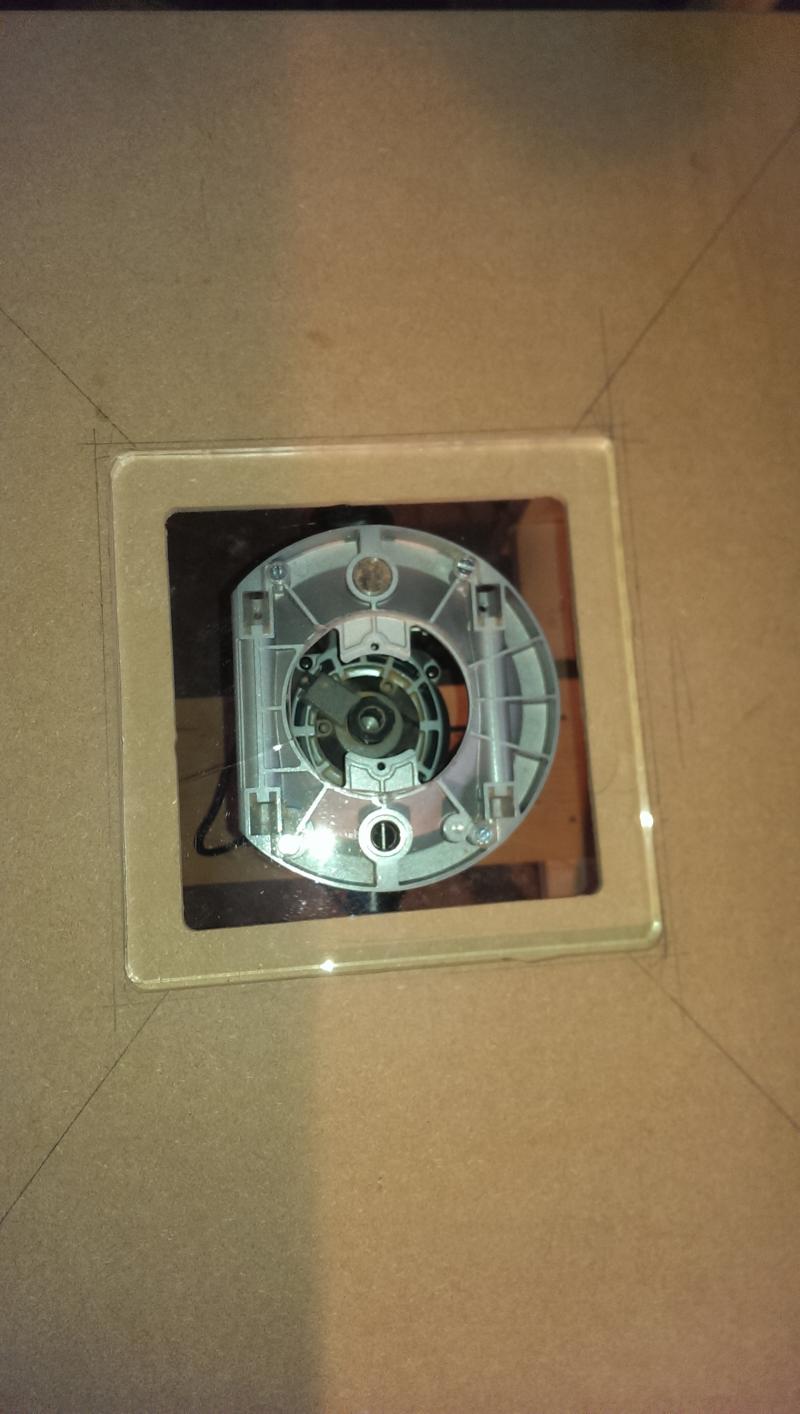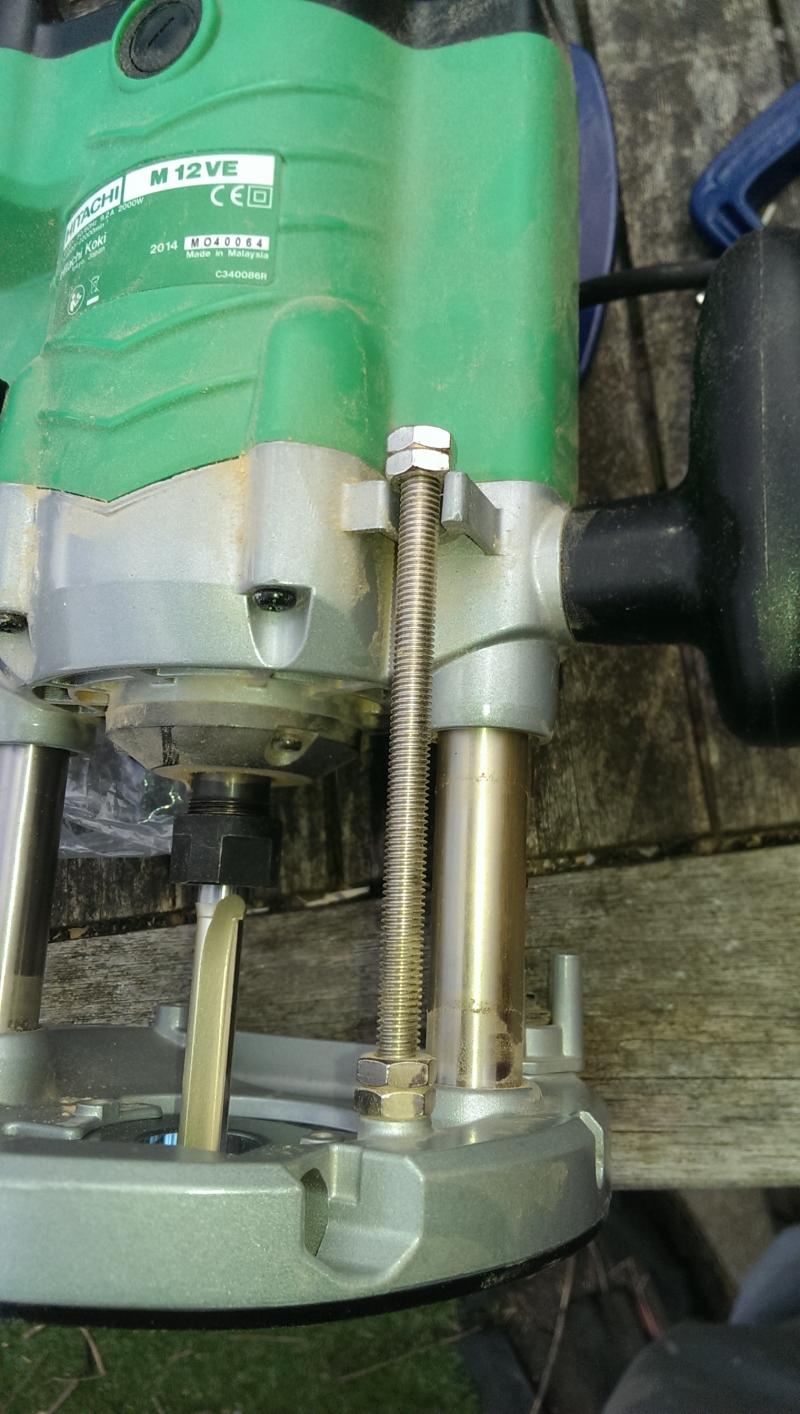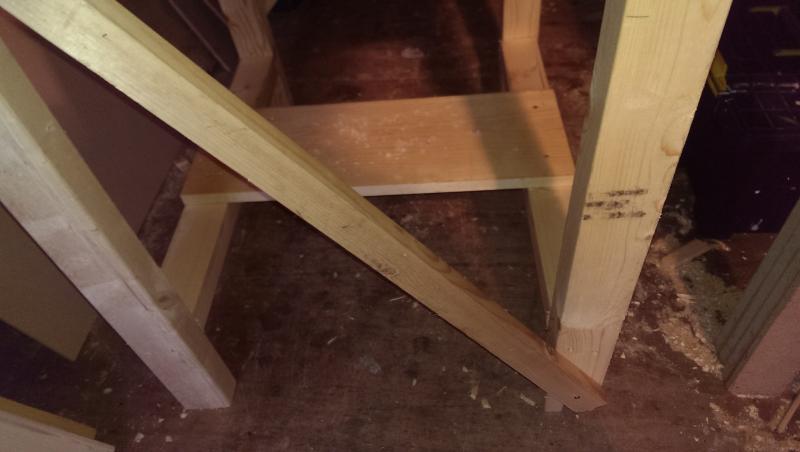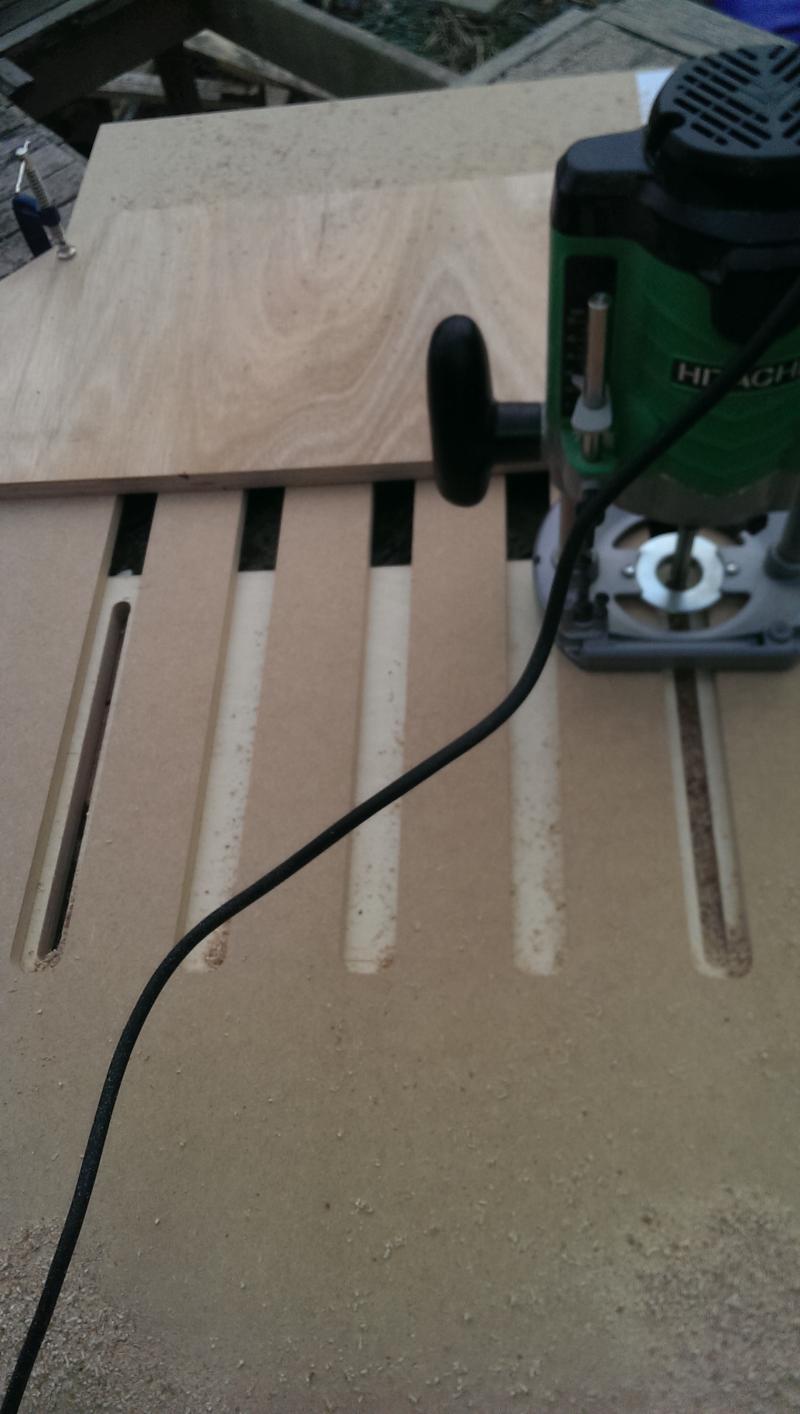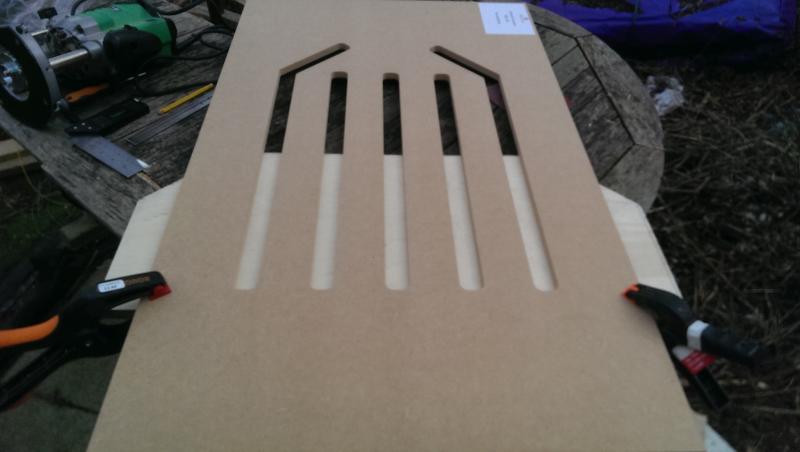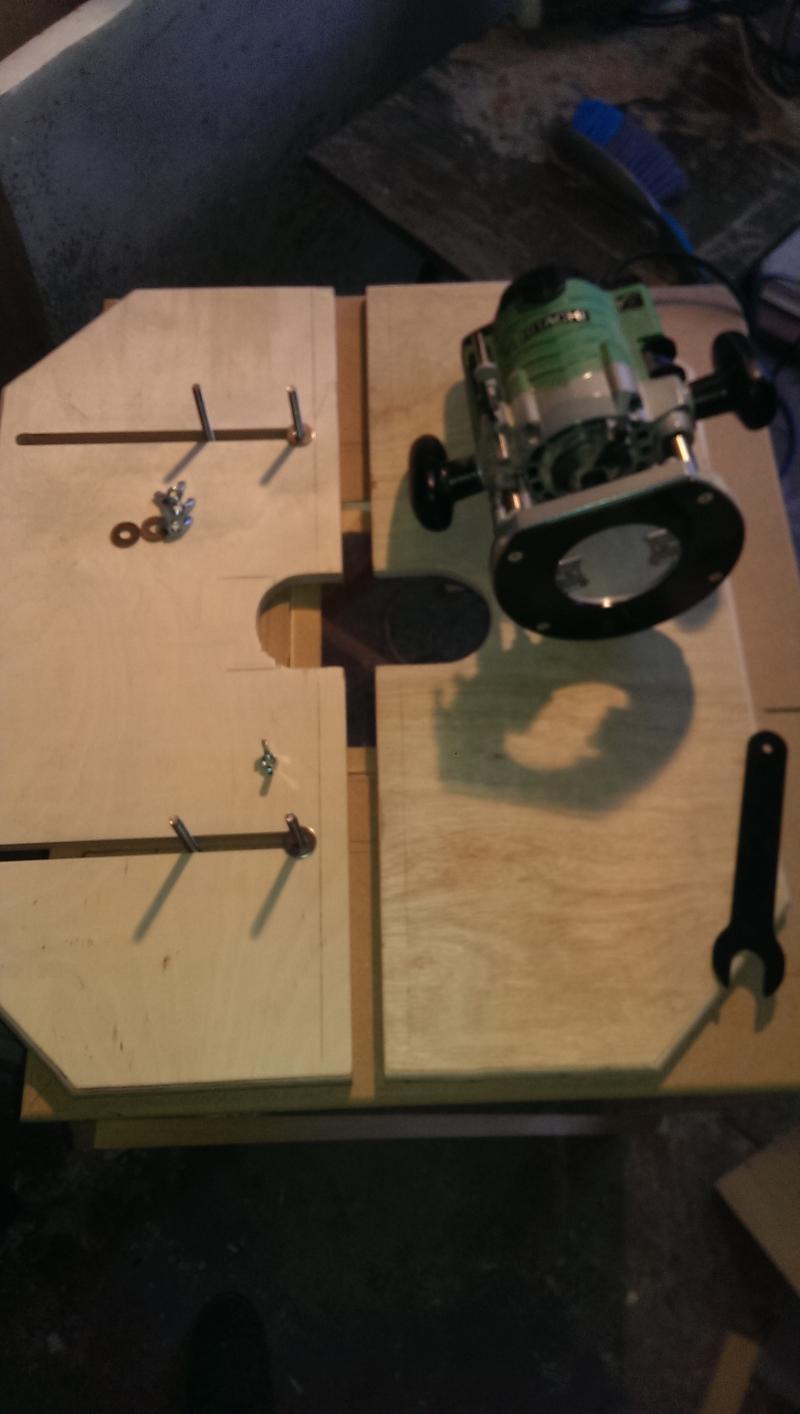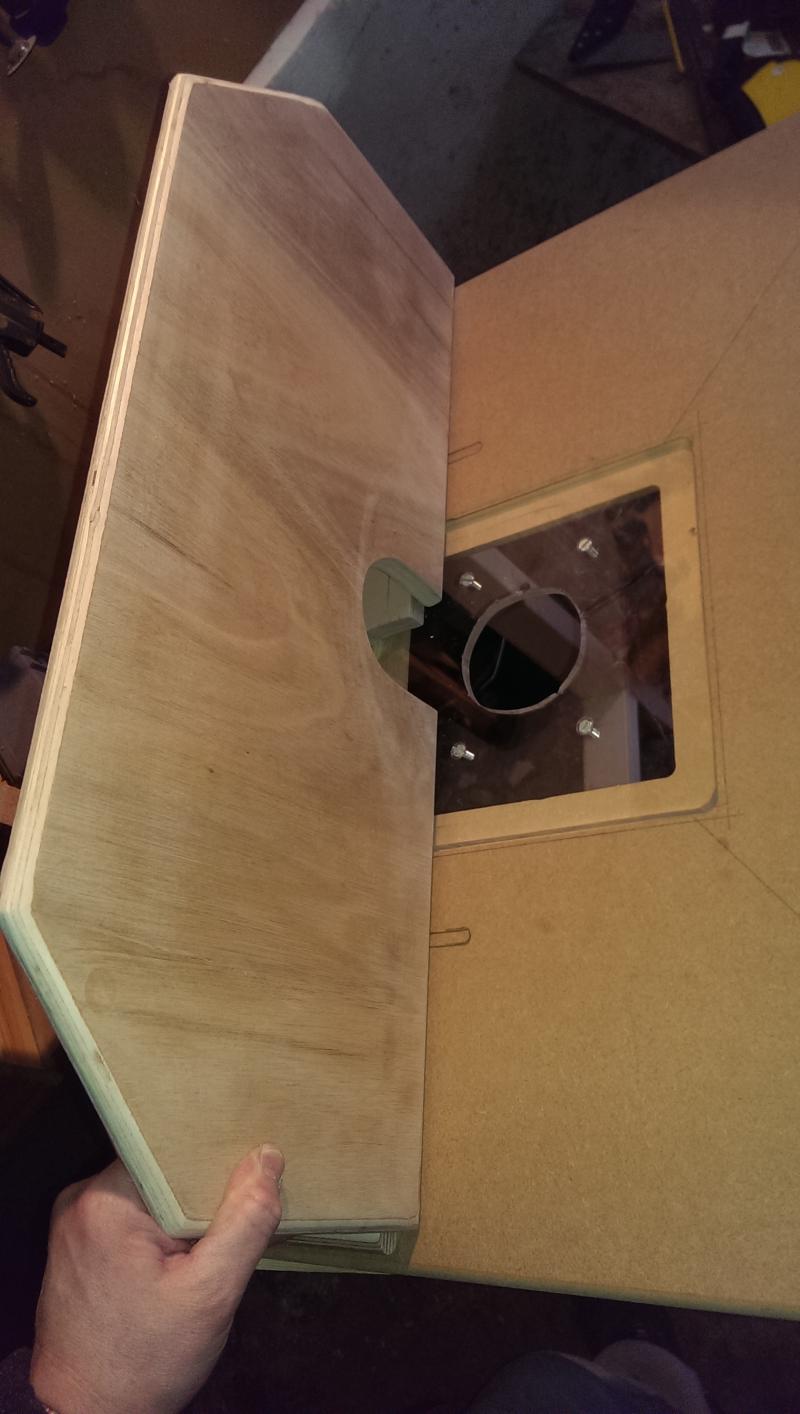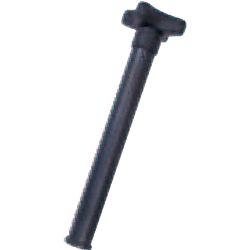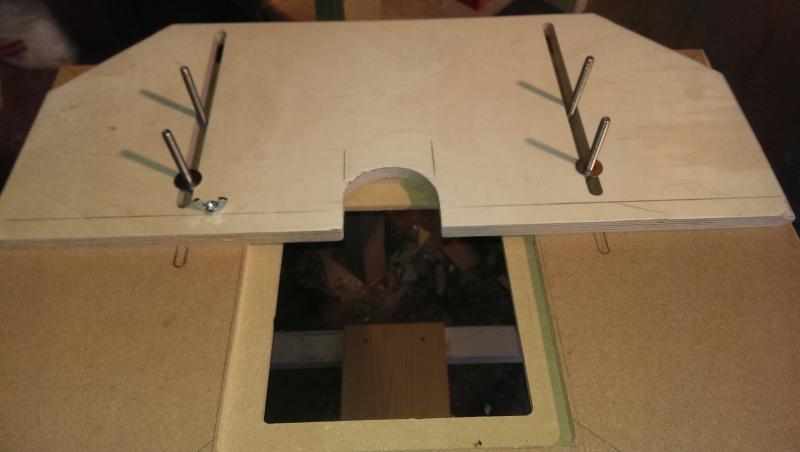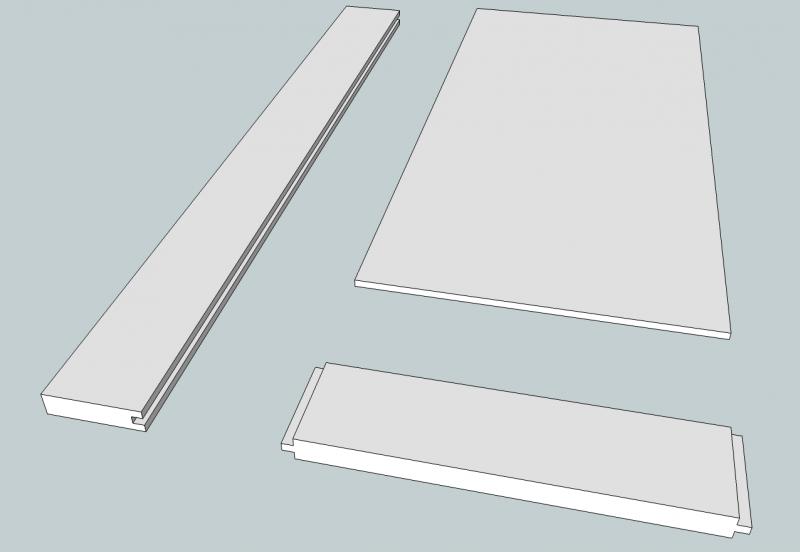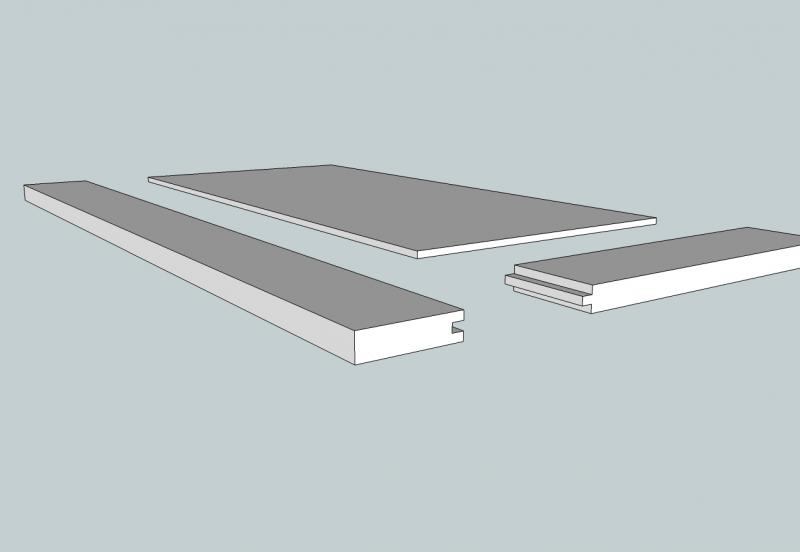Wat is the easyest shape to cut? Round or square. Table top is 18mm x 600 x 700 mdf. What is standard size for mounting plate?
There's no such thing as a standard size, TBH. Perhaps you should look at the sizes of the standard ones
The basic router table I was envisioning is something like this:
To make it stronger I'd make a small overhang for the top and add 2 x 1 PAR softwood cleats in the corners, plus an MDF brace (shown 100mm wide) at the back:
To rout-out for a router plate fix four 2 x 1in softwood cleats to for a template around where you want the opening to be. In this case I've opted to show it for an opening to be cut-out made using a 30mm guide bush and an 8mm cutter so giving a distance between the template and the opening of 11mm (30 - 8 / 2):
If it helps you to balance the router, double-up the cleats (one only shown). Here it's shown after the cut-out is done:
Next move the cleats out by 10mm to form a 10mm rebate ledge:
Set-up to route the rebate using the same cutter/guide bush setting. To set the depth pop your router on the template and without the motor plunge until the cutter stops at the surface of the MDF. Withdraw the depth stop flag, insert an offcut from the corner of your 10mm acrylic (remove the protective plastic) between the depth stop flag and the depth turret and drop the flag down onto the plastic. Tighten the depth stop flag. You've now set your depth of cut to match the material you'll be sinking into the top. Now rout-out the rebate to hold the router plate taking care not to tip the router:
Remove the cleats and clean-up the top:
A hole should be drilled in the top near the edge on the same centre line as the router base plate to take a coach bolt. The fence (in this case a piece of 3 x 2in PAR softwood on edge) is also drilled and held to the worktop by drilling a hole for an 8 or 10mm coach bolt through the softwood and the worktop:
By pivoting the fence on the coach bolt the width of cut can be varied. the other end of the fence is secured using a G-cramp when making cuts. This is really basic and simple, but TBH it suits 80%+ of my needs
Sorry no photos - I chucked the last one away after it got a soaking, but I normally don't bother with the router plate, just drill a hole through the top for the cutter plus two smaller ones to screw the router to and away I go, so I can't really help with a plate size. I also have been known to use the scissor jack out of the van with a circular MDF "handwheel" as a cheap and cheerful router lift
As to the insert I'd do the initial cutting with a hacksaw or jigsaw with a metal blade (needs fine teeth) after you've done the rebate - then use your router and a piece of MDF as a guide with a bearing template bit to trim the edges. Leave the plastic protective film on the acrylic while you route-it to protect and keep the amount you trim off down to 2 or 3mm width, no more, if you can. The corners can be rounded with a hand file to fit.
You can do the cut-out to act as a template, but that means buying two or three guide bushes and cutters - this way, whilst a bit more quick and dirty will get you up and working fast without buying much or anything extra


